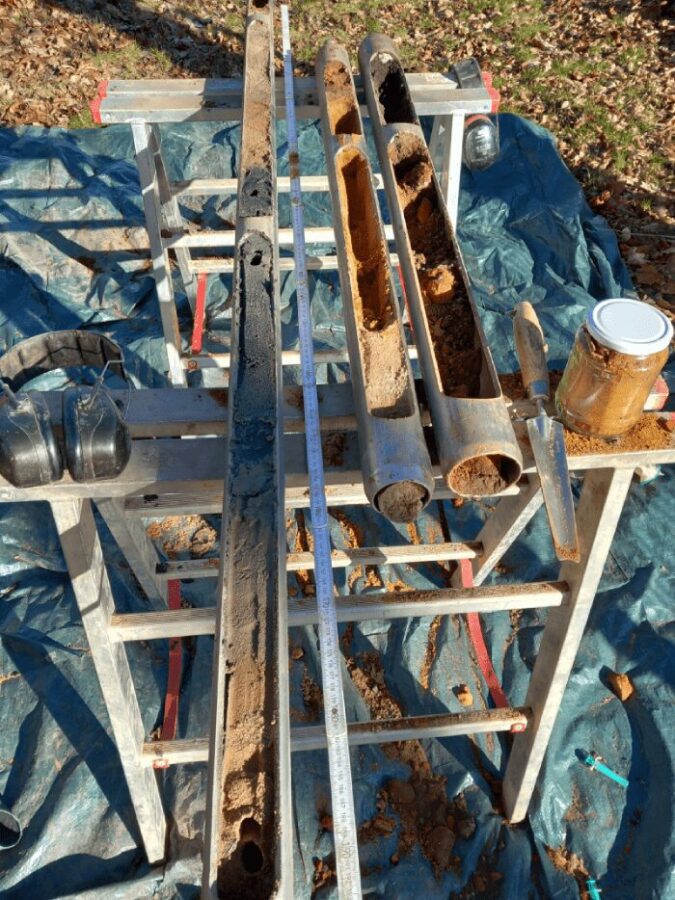In the investigation of contaminated sites, one often encounters old sites where petrol stations used to be located. Particularly in the case of underground tanks, contamination of the soil and groundwater is usually present. These are caused by leakages at the tanks or simply by overflow damage during refilling. The main contaminants in petrol, diesel or heating oil tanks are usually mineral oil hydrocarbons. These have 10 to 40 carbon atoms, which are strung together like a chain, and are very perceptible by smell. Due to the long molecules, however, this group of substances does not count as highly volatile pollutants.
In diesel and heating oil, the highly volatile substances do not play a major role. In petrol, on the other hand, the highly volatile component is formed from the so-called BTEX aromatics. This abbreviation stands for the substances benzene, toluene, ethylbenzene and xylenes, which used to be added to petrol as anti-knock agents. Today, they are still contained in petrol, but only at a maximum permitted concentration of 1 %.
Benzene has been proven to have carcinogenic and mutagenic effects, and it can also cause blood diseases and temporary blindness.
In order to check whether a contaminated site poses a risk to human health and groundwater due to BTEX aromatics, soil and groundwater samples are taken, as well as soil gas samples, and the contents are assessed according to the common assessment principles (e.g. by LAWA). In the case of significant contamination requiring remediation, soil exchange or continuous soil vapour extraction and purification using activated carbon can be carried out, for example. But pollutants can also be degraded over time by microorganisms.
In addition to the BTEX aromatics, we have recently also had to deal with other highly volatile substances from the group of trimethylbenzenes (TMB). These belong to the so-called C3-aromatics and can attack the central nervous system, among other things. The three TMB isomers mesitylene, pseudocumene and hemimellithine are naturally present in coal tar, but also in fuel and are often used as solvents. Unlike BTEX aromatics, there is no clear assessment strategy for TMB in Lower Saxony. In addition, TMB are more persistent, i.e. less degradable, which is why they often make up a significant proportion of old damage cases. If the BTEX aromatics (especially benzene and toluene) have already been degraded at a petrol station damage due to the high age of the damage, often only the TMB with higher contents remain. However, since it can be assumed that the source of the damage has already dried up and the levels will continue to decline, the TMBs are only considered an artefact of a previous damage.


